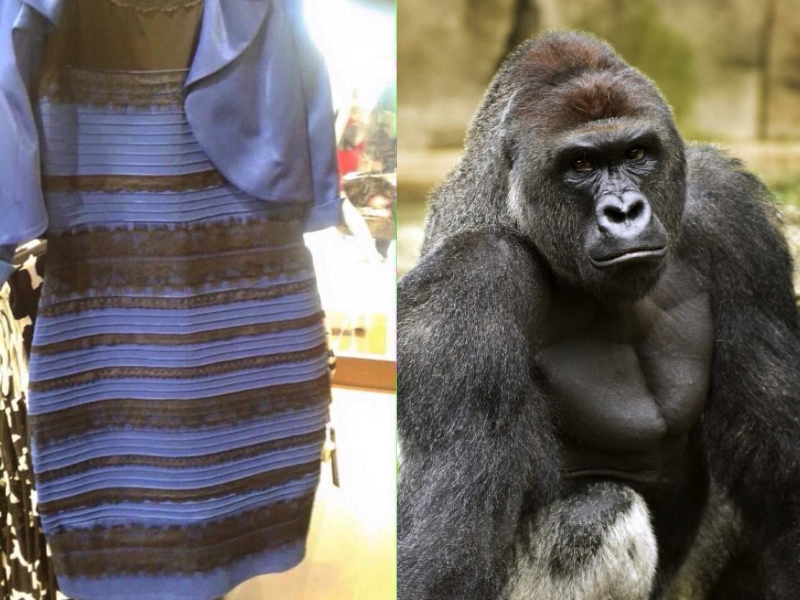|
I have no desire to reignite the controversy that erupted over the internet regarding the color of the dress. You may recall that some folks saw it as gold and white while others saw it as black and blue. Regardless of what you see it prompted some interesting research into our perceptions.
The Role of the Mind Psychologists are now coming to understand that our brain actually plays a far larger role in framing our perception of reality. Our experiences are stored in our brain and eventually form a baseline of expectations (or beliefs) for the things we see around us. We look at a tomato and our previous experience might be that all tomatoes are red. This tomato is green and so the brain will reference any data around green tomatoes and if it finds something will adjust our perception based on that data. It could be the play of light on the tomato or it finds a corresponding experience with a green tomato. All of this happens in micro-seconds without us ever realizing it. There is a growing field of study that even suggests that the brain scans our environment ahead of our becoming "aware" of it. Ever had that feeling of Deja vu? The Gorilla This sensory expectation can actually be used to trick the mind. One of my favorite clips I reference when I am discussing leadership is the basketball bounce and the gorilla. A group is asked to look at a video of people passing a basketball around between them and are asked to count how many passes are made by bounce passes. In the midst of the event a man in a gorilla suite walks through the midst of them. The majority of people never see the gorilla and this is explained in part because our minds don't expect to see a gorilla in that setting. It is a useful example when discussing safety or general leadership perceptions. Sometimes we get so focused on a detail or set of details we fail to see the "bigger picture." We miss the gorilla in the mix. (Pardon the pun!) Where it Gets Tricky This can be a problem too when it comes to things like hiring or forming functioning teams. There is ample research, for example, to indicate that we bias toward taller people when looking for leadership qualities. Or we bias toward good looking people and may ignore the data in front of us that suggests lack of qualification. We may bias toward people who remind us of friends or family. On teams we may find it difficult to "warm up" to someone because they resemble a person we had a run in with long ago. Just to be clear we never consciously go through that thought process it is something that happens in those micro-seconds when we first meet someone. Filling in the Gaps Don't think this happens? Research has found that women who have had a good relationship with their father tend to marry men with similar traits or characteristics. Some may do this consciously but most are never aware of this process. Another good example are those great little exercises on Facebook where you have a sentence that looks like gibberish but just enough letters to allow the mind to create context. Most of us will read that sentence of gibberish and guess it perfectly. Our beliefs and expectation exert a powerful influence on how we perceive our environment. The question becomes "How do you create allowances for this so as to negate those biases?" Performance Leadership - Think About It!
Roland Loup
12/17/2016 09:11:59 am
Thanks for this insightful piece. since the first time I heard "I will see it when I believe it," I have adopted that approach to my conversation, writing and consulting. Comments are closed.
|
Archives
January 2021
|


